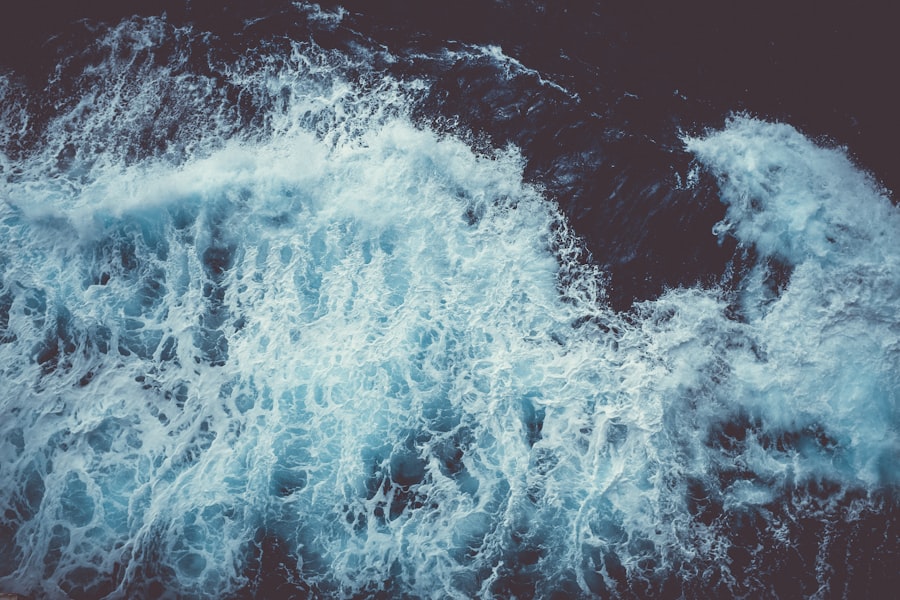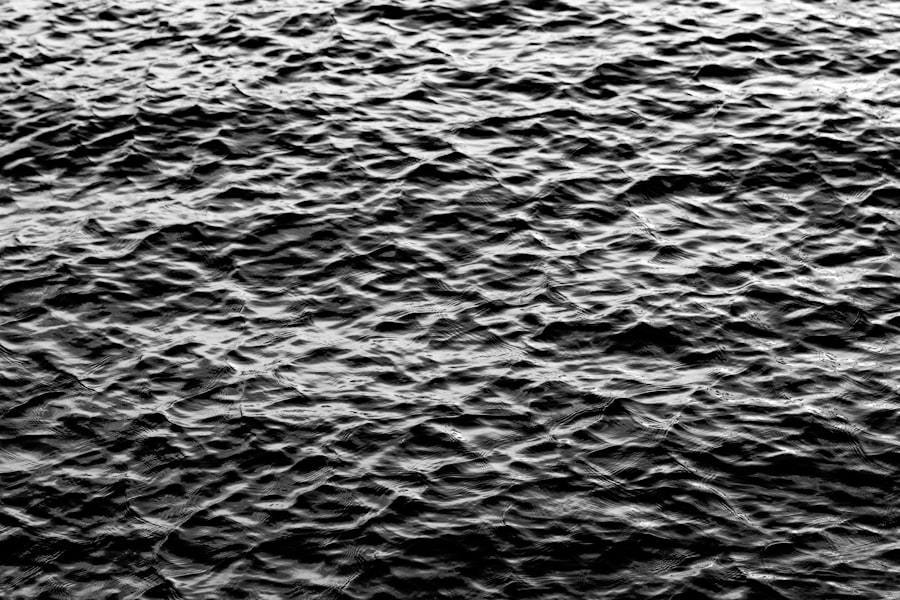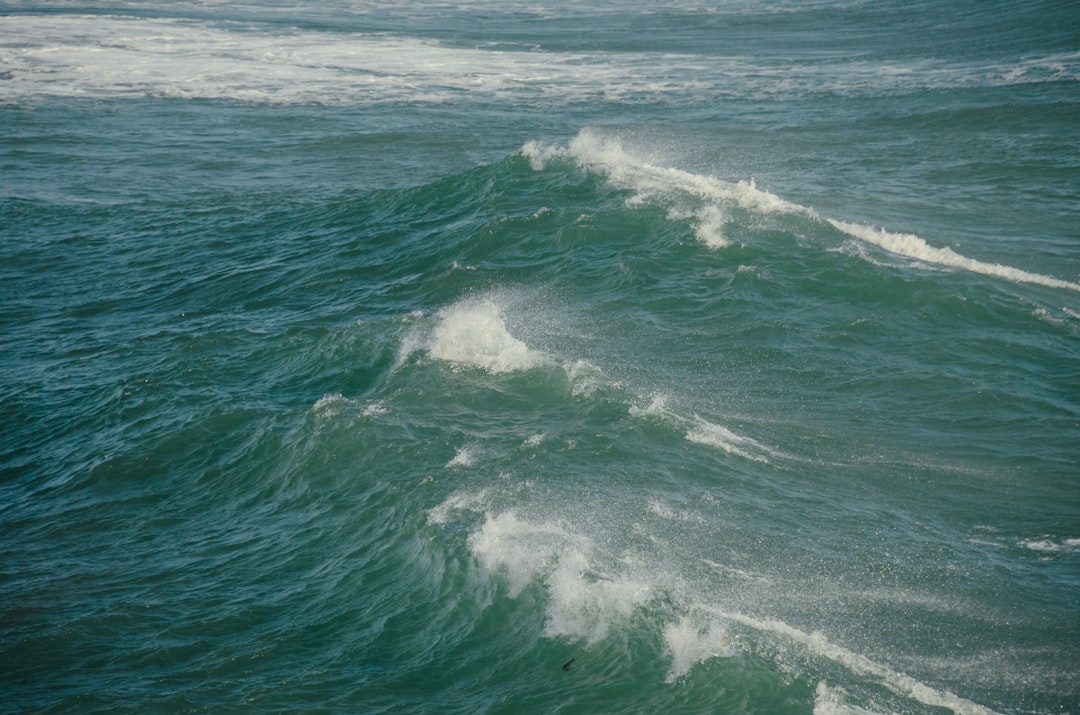The Drake Passage, a body of water situated between the southern tip of South America and Antarctica, is renowned for its tumultuous seas and unpredictable weather. This narrow stretch of ocean, measuring approximately 800 kilometers (500 miles) wide, serves as a critical conduit for maritime traffic between the Atlantic and Pacific Oceans. The passage is named after the English explorer Sir Francis Drake, who navigated these waters in the late 16th century.
Its significance extends beyond mere geography; it is a vital area for understanding oceanic currents, climate patterns, and marine biodiversity. The unique geographical features of the Drake Passage contribute to its notorious reputation. The convergence of the Atlantic, Pacific, and Southern Oceans creates a dynamic environment where powerful currents collide, resulting in rough seas and high waves.
This phenomenon is often referred to as the “Drake Shake,” a term that evokes both awe and trepidation among sailors and travelers alike. The passage is not only a physical barrier but also a symbolic threshold, marking the transition from the temperate climates of South America to the icy realms of Antarctica. For many adventurers, crossing the Drake Passage is a rite of passage, a test of endurance and resilience against nature’s formidable forces.
Key Takeaways
- The Drake Passage is a body of water between South America’s Cape Horn and the South Shetland Islands of Antarctica, known for its rough seas and challenging weather conditions.
- Travelers should prepare for the journey by packing appropriate clothing, seasickness medication, and being mentally prepared for the potential rough seas.
- Navigating the weather in the Drake Passage can be unpredictable, with strong winds and high waves being common. It’s important to stay informed and follow the guidance of the ship’s crew.
- Safety measures on the passage include following the instructions of the crew, wearing a life jacket when necessary, and being aware of emergency procedures.
- Wildlife spotting in the Drake Passage is a highlight of the journey, with opportunities to see various species of seabirds, whales, and other marine life.
Preparing for the Journey
Preparation for a journey across the Drake Passage requires careful planning and consideration. Travelers must equip themselves with appropriate gear to withstand the harsh conditions that can arise during the crossing. Layering clothing is essential, as temperatures can fluctuate dramatically.
Waterproof outer layers, thermal undergarments, and sturdy footwear are crucial for maintaining comfort and warmth. Additionally, packing seasickness remedies is advisable, as the unpredictable nature of the waters can lead to discomfort for even the most seasoned sailors. Beyond physical preparations, mental readiness plays a significant role in ensuring a successful journey.
Travelers should familiarize themselves with the unique challenges posed by the Drake Passage, including its notorious weather patterns and potential for rough seas. Engaging in pre-trip research can help set realistic expectations and foster a sense of adventure.
Navigating the Weather

The weather in the Drake Passage is notoriously capricious, characterized by rapid changes that can occur within minutes. Travelers must be prepared for a range of conditions, from calm seas to violent storms. The passage is influenced by various meteorological factors, including wind patterns and ocean currents, which can create challenging situations for vessels navigating these waters.
Understanding these dynamics is crucial for both safety and comfort during the crossing. Weather forecasting technology has advanced significantly in recent years, providing mariners with more accurate predictions than ever before. However, even with modern tools at their disposal, captains must remain vigilant and adaptable.
The ability to read the sea and respond to changing conditions is an invaluable skill that can make all the difference during a crossing. For travelers, staying informed about weather updates and being flexible with travel plans can enhance their experience and ensure a safer journey through this unpredictable region.
Safety Measures on the Passage
| Passage | Safety Measures |
|---|---|
| Lighting | Ensure adequate lighting to improve visibility and deter criminal activity. |
| Security Personnel | Deploy security personnel to monitor and respond to any safety concerns. |
| CCTV Surveillance | Install CCTV cameras to monitor the passage and record any incidents. |
| Emergency Call Points | Provide emergency call points for individuals to seek help in case of an emergency. |
Safety is paramount when traversing the Drake Passage, given its reputation for treacherous conditions. Vessels are equipped with various safety measures designed to protect both crew and passengers during their journey. Life jackets, lifeboats, and emergency beacons are standard equipment on ships navigating these waters.
Additionally, crew members undergo rigorous training to handle emergencies effectively, ensuring that they are prepared for any situation that may arise. Communication systems also play a critical role in maintaining safety on the passage. Modern vessels are equipped with satellite phones and radio systems that allow for constant contact with coast guards and other maritime authorities.
This connectivity is essential for receiving real-time updates on weather conditions and potential hazards. Travelers are encouraged to familiarize themselves with safety protocols before embarking on their journey, ensuring they understand what to do in case of an emergency.
Wildlife Spotting in the Drake Passage
The Drake Passage is not only a challenging maritime route but also a rich habitat for diverse marine wildlife. As travelers navigate these waters, they have the opportunity to encounter an array of species, including whales, seals, and seabirds. The nutrient-rich waters of the passage support a vibrant ecosystem that attracts various marine animals, making it a prime location for wildlife enthusiasts.
Among the most sought-after sightings are the majestic humpback whales and orcas that frequent these waters during certain seasons. Birdwatchers also find delight in spotting albatrosses and petrels soaring above the waves. The chance to witness these magnificent creatures in their natural habitat adds an exhilarating dimension to the journey across the Drake Passage.
Travelers are often encouraged to bring binoculars and cameras to capture these unforgettable moments while respecting wildlife viewing guidelines to ensure minimal disturbance to the animals.
Tips for a Smooth Crossing

To ensure a smooth crossing of the Drake Passage, travelers can adopt several practical tips that enhance their experience. First and foremost, maintaining an open mind and a sense of adventure is crucial. Embracing the unpredictability of the journey can transform potential discomfort into memorable experiences.
Engaging with fellow travelers and sharing stories can foster camaraderie and make the crossing more enjoyable. Additionally, staying hydrated and nourished is essential during the journey. The physical demands of navigating rough seas can take a toll on one’s energy levels.
Taking advantage of onboard amenities such as lounges or observation decks can also enhance comfort during periods of rough weather. By prioritizing well-being and fostering connections with others on board, travelers can navigate the challenges of the Drake Passage with greater ease.
Historical Significance of the Drake Passage
The historical significance of the Drake Passage extends far beyond its geographical boundaries. This body of water has been a pivotal route for explorers, scientists, and traders throughout history. Sir Francis Drake’s expedition in 1578 marked one of the first recorded crossings of this treacherous passage, paving the way for future exploration of Antarctica and beyond.
His journey not only contributed to maritime navigation but also expanded European knowledge of distant lands. In addition to its role in exploration, the Drake Passage has been instrumental in scientific research related to climate change and oceanography. The unique currents and ecosystems found within this region provide valuable insights into global climate patterns and marine biodiversity.
Researchers continue to study these waters to better understand their impact on ocean health and climate dynamics, underscoring the passage’s importance in contemporary scientific discourse.
The Importance of the Drake Passage for Marine Life
The Drake Passage serves as a vital corridor for marine life, supporting an intricate web of ecosystems that thrive in its nutrient-rich waters. The convergence of different ocean currents creates an environment conducive to phytoplankton growth, which forms the foundation of the marine food web. This abundance attracts various species, from krill to larger predators like seals and whales.
Moreover, the passage acts as a migratory route for numerous marine species seeking breeding grounds or feeding opportunities. For instance, many whale species migrate through these waters during specific seasons, taking advantage of the rich feeding grounds that characterize this region. The health of marine life in the Drake Passage is not only crucial for local ecosystems but also has broader implications for global biodiversity and fisheries management.
Navigating the Waves: A Captain’s Perspective
From a captain’s perspective, navigating the Drake Passage presents both challenges and rewards. Experienced captains understand that each crossing is unique; no two journeys are alike due to ever-changing weather conditions and sea states. Their expertise lies not only in technical navigation skills but also in reading environmental cues that signal shifts in weather or sea conditions.
Captains often rely on their intuition honed through years of experience at sea. They must make quick decisions regarding course adjustments or speed changes based on real-time observations. Communication with crew members is vital during these moments; teamwork ensures that everyone remains alert and prepared for any challenges that may arise during the crossing.
The Challenges of Navigating the Drake Passage
Navigating the Drake Passage poses numerous challenges that test even seasoned mariners’ skills. The unpredictable weather patterns can lead to sudden storms or high waves that require immediate adjustments in navigation strategies. Additionally, strong currents can create hazardous conditions that complicate maneuvering vessels through this narrow stretch of water.
Another challenge lies in managing passenger comfort during rough crossings. Captains must balance safety with ensuring that travelers feel secure throughout their journey. This often involves making decisions about when to slow down or alter course based on passenger feedback regarding sea conditions.
Ultimately, navigating these challenges requires a combination of technical expertise, adaptability, and strong leadership skills.
Making the Most of Your Time in the Drake Passage
To make the most of time spent in the Drake Passage, travelers should embrace every moment as an opportunity for discovery and adventure. Engaging with onboard activities such as lectures or workshops can enhance understanding of this unique environment while fostering connections with fellow travelers who share similar interests. Additionally, taking time to appreciate the natural beauty surrounding them is essential during this journey.
Whether observing wildlife from deck or simply enjoying breathtaking views of ocean waves crashing against rocky shores, each moment offers something special worth savoring. By approaching their experience with curiosity and openness, travelers can create lasting memories that extend far beyond their crossing of this remarkable passage.
The Drake Passage, known for its turbulent waters and powerful waves, is a critical area for understanding oceanic currents and climate patterns. An interesting article that delves into the dynamics of waves in this region can be found on MyGeoQuest. This piece explores the unique geographical and meteorological conditions that contribute to the passage’s notorious reputation among sailors and researchers alike. For more detailed insights, you can read the full article by visiting MyGeoQuest’s sample page.
WATCH HERE: Drake Passage: Earth’s Deadliest Waters Revealed
FAQs
What are waves in Drake Passage?
Waves in Drake Passage are large and powerful ocean waves that occur in the body of water between South America’s Cape Horn and the South Shetland Islands of Antarctica. These waves are known for their extreme size and strength, making them a significant factor for ships and vessels navigating through the area.
What causes the waves in Drake Passage?
The waves in Drake Passage are primarily caused by the strong and consistent westerly winds that blow across the Southern Ocean. These winds generate large swells and waves that can reach significant heights and pose a challenge for maritime navigation.
How high can the waves in Drake Passage get?
The waves in Drake Passage can reach heights of up to 30 meters (nearly 100 feet) during extreme weather conditions. These towering waves are a result of the powerful winds and the vast expanse of open ocean in the region.
Why are the waves in Drake Passage significant?
The waves in Drake Passage are significant due to their size and strength, which can pose a serious hazard to ships and vessels navigating through the area. The challenging maritime conditions in the passage have earned it a reputation as one of the most treacherous stretches of water in the world.
How do the waves in Drake Passage impact maritime activities?
The waves in Drake Passage can impact maritime activities by creating hazardous conditions for ships and vessels. Navigating through the passage requires careful planning and consideration of the weather and sea conditions to ensure the safety of crew and cargo.
